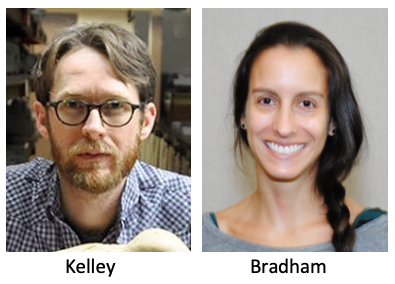Teaching Innovations at Vanderbilt: Neil Kelley, Jennifer Bradham and Class Simulations
By Faith Rovenolt, CFT undergraduate intern
 Neil Kelley teaches EES 1030L: Oceanography Lab, assisted by his TAs, Michaela Peterson and Jennifer Bradham. I was able to speak with Kelley and Bradham about a specific lab that, quite frankly, made me want to take the course just so I could be a part of it. And that’s a big statement for someone with an entirely different major. During the “Law of the Sea” lab session, students work through a simulation where they renegotiate international use and rights to the ocean. From a student’s perspective, it’s incredibly compelling and real.
Neil Kelley teaches EES 1030L: Oceanography Lab, assisted by his TAs, Michaela Peterson and Jennifer Bradham. I was able to speak with Kelley and Bradham about a specific lab that, quite frankly, made me want to take the course just so I could be a part of it. And that’s a big statement for someone with an entirely different major. During the “Law of the Sea” lab session, students work through a simulation where they renegotiate international use and rights to the ocean. From a student’s perspective, it’s incredibly compelling and real.
Kelley and Bradham have each taught the course multiple times. Bradham was there to see what this lab looked like at its inception: an almost scripted, unengaging activity that wasn’t interactive. Bradham, and now Kelley, have worked to reshape both the course overall and this lab. Now, students walk into class and are greeted by a large map, depicting a fantasy world with countries that they will represent. Presented with a brief description and location of their country, they are then instructed to work with other groups to reach an agreement on the sovereign rights each country has to ocean resources. Each group has information that explains the country’s strengths, needs, and (to some extent) cultural expectations, and groups are expected to take these perspectives seriously as they negotiate.
This lab has been extremely well received. Bradham told me students often tell her it is their favorite lab activity. Part of why this activity goes over so well is that it appeals to the diversity of students in the class; oceanography attracts more than just STEM majors, and this activity allows students to bring their different backgrounds to the simulation. This simulation is also a culminating activity that makes students form connections between different facets of the material they’ve learned during the semester. It brings together what they’ve learned and makes them think critically about it.
Each time they do this lab, Bradham and Kelley are pleasantly surprised by just how passionate students can get with the activity. And it’s something very doable in other courses as well. As Bradham pointed out, most fields have a controversial topic that can be debated or simulated by students. Implementation is fairly easy and works best when:
- it is structured; students should still be guided and kept on course, prompted if needed to get started
- students are comfortable with the TAs and professor; things can get passionate, and students are most likely to embrace the activity if they’re in an inclusive classroom
- it is done all in one class session
- visuals and ownership are given to students; for example, Kelley and Bradham use the map of the different countries and ask students to name their country and to develop their own negotiation style and strategies
- students can embellish and be creative; in this course, students can add to their country description, making reasonable additions that make each session unique
Kelley feels like this lab does a good job of helping his students engage with some of the challenges of developing policies that respect environmental needs and correspond with different countries’ needs. He has toyed with changing the scenario to something more currently pressing (climate change, anyone?), but overall is incredible pleased with the lab. I can see why, as I would also love more of my courses to allow students to work through simulations, to get passionate about what we’re being taught in an interactive way.
To learn more about the simulation, check out the lab handout and the country descriptions (really fascinating!)—and to design one for your own course, consider applying to the CFT’s Junior Faculty Teaching Fellows or BOLD Fellows programs.

Leave a Response